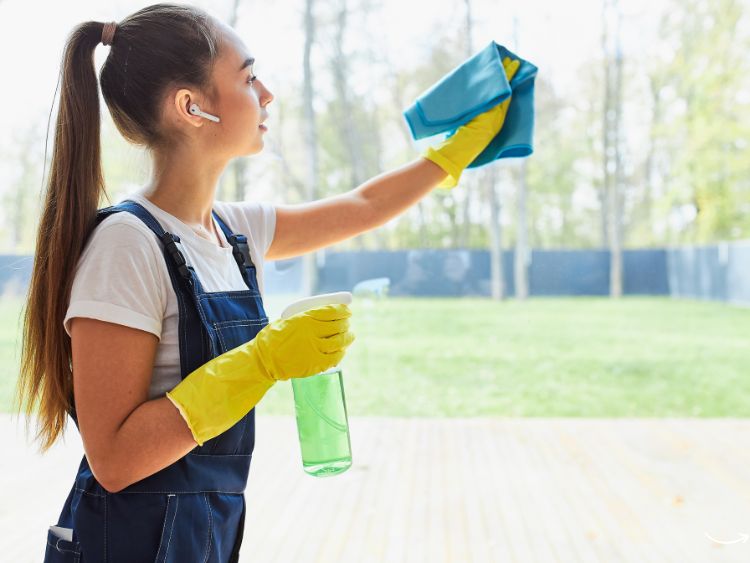Ah, the joy of clean windows! Nothing beats the feeling of looking through sparkling glass that brings the outside world in with crystal clarity. But let’s be honest—window cleaning isn’t everyone’s favorite chore. That’s where fresh frames window cleaning comes into play. Whether you’re a homeowner looking to spruce up your living space or a business aiming to make a great first impression, clean windows are a must. But how do you get those windows so clean they practically sparkle? Buckle up, because we’re about to dive deep into the world of window cleaning, sharing tips, tricks, and everything you need to know to keep those panes pristine.
Why Clean Windows Matter
You might be thinking, “Sure, clean windows look nice, but are they really that important?” Absolutely! Here’s why:
- Aesthetic Appeal: Clean windows enhance the overall look of your home or office. They make your property look well-maintained and inviting.
- Natural Light: Clean windows allow more natural light to enter your space, creating a brighter and more pleasant environment.
- Longevity: Regular cleaning prevents the buildup of dirt and grime, which can cause damage over time. This extends the lifespan of your windows.
- Health Benefits: Clean windows reduce the amount of dust and allergens that can accumulate on the glass, contributing to a healthier living or working space.
Tools and Supplies You’ll Need
Before you start your fresh frames window cleaning journey, make sure you have the right tools and supplies. Here’s a handy list:
- Squeegee: A must-have for streak-free cleaning.
- Bucket: For mixing your cleaning solution.
- Cleaning Solution: You can buy a commercial window cleaner or make your own with water and a few drops of dish soap.
- Microfiber Cloths: Great for wiping down frames and sills.
- Scraper: For removing tough grime or paint splatters.
- Extension Pole: Helpful for reaching high windows.
Step-by-Step Guide to Fresh Frames Window Cleaning
Now that you’ve got your supplies, let’s get started! Follow these steps for gleaming windows:
1. Prepare Your Cleaning Solution
Fill your bucket with water and add a few drops of dish soap. This simple solution is effective and gentle on your windows.
2. Remove Dust and Cobwebs
Before you start washing, use a dry microfiber cloth to dust off the frames and sills. This prevents dirt from turning into a muddy mess when you add water.
3. Wash the Windows
Dip your squeegee into the cleaning solution and start at the top of the window. Work your way down in a “S” pattern, making sure to cover the entire surface.
4. Wipe the Edges
Use a clean, dry microfiber cloth to wipe the edges and corners where the squeegee might not reach.
5. Check for Streaks
Step back and inspect your work. If you see any streaks, go over them with a dry cloth.
6. Clean the Frames
Don’t forget the frames! Wipe them down with a damp cloth to remove any remaining dirt.
Common Window Cleaning Mistakes to Avoid
Even with the best intentions, mistakes can happen. Here are a few common pitfalls to watch out for:
- Cleaning on a Sunny Day: It might seem like a good idea, but the sun can cause your cleaning solution to dry too quickly, leaving streaks.
- Using Too Much Soap: A little soap goes a long way. Too much can leave a soapy residue.
- Not Changing Your Water: Dirty water equals dirty windows. Change your water frequently to avoid reapplying dirt to your glass.
Tips for Hard-to-Reach Windows
Cleaning high or awkwardly placed windows can be a challenge. Here are some tips to make it easier:
- Use an Extension Pole: Attach your squeegee or cloth to an extension pole to reach high windows.
- Consider a Ladder: If it’s safe to do so, use a sturdy ladder to get closer to the window.
- Hire a Professional: Sometimes it’s best to leave it to the experts. Professional window cleaners have the tools and experience to handle tricky spots.
Benefits of Professional Fresh Frames Window Cleaning
While DIY window cleaning can be satisfying, there are several advantages to hiring professionals:
- Expertise: Professional cleaners know the best techniques and products to use.
- Time-Saving: Leave the work to the pros and free up your time for other tasks.
- Safety: Professional cleaners have the equipment to safely clean high or hard-to-reach windows.
- Streak-Free Guarantee: Many professional services offer a streak-free guarantee, ensuring your windows look their best.
Frequently Asked Questions
What’s the best time of year to clean windows?
Spring and fall are ideal for window cleaning. The weather is mild, and you can tackle the job before or after the high pollen and dust seasons.
Can I use vinegar to clean my windows?
Yes, vinegar is a great natural cleaner. Mix equal parts water and vinegar for an effective window cleaning solution.
How often should I clean my windows?
It depends on your environment. In general, cleaning your windows twice a year is a good rule of thumb. However, if you live in a particularly dusty or rainy area, you might need to clean them more often.
Are there any windows that should be cleaned more frequently?
Yes, windows that are near high-traffic areas or exposed to the elements (like those facing a busy street) may need more frequent cleaning.
Summary
Keeping your windows clean doesn’t have to be a daunting task. With the right tools, techniques, and a little bit of elbow grease, you can achieve fresh frames window cleaning results that will leave your windows looking better than ever. Remember, whether you’re doing it yourself or hiring a professional, the key is regular maintenance and attention to detail.
For more information on window cleaning, check out these authoritative links:
There you have it! With this comprehensive guide, you’re well on your way to achieving windows so clean, they’ll make your whole house shine.







